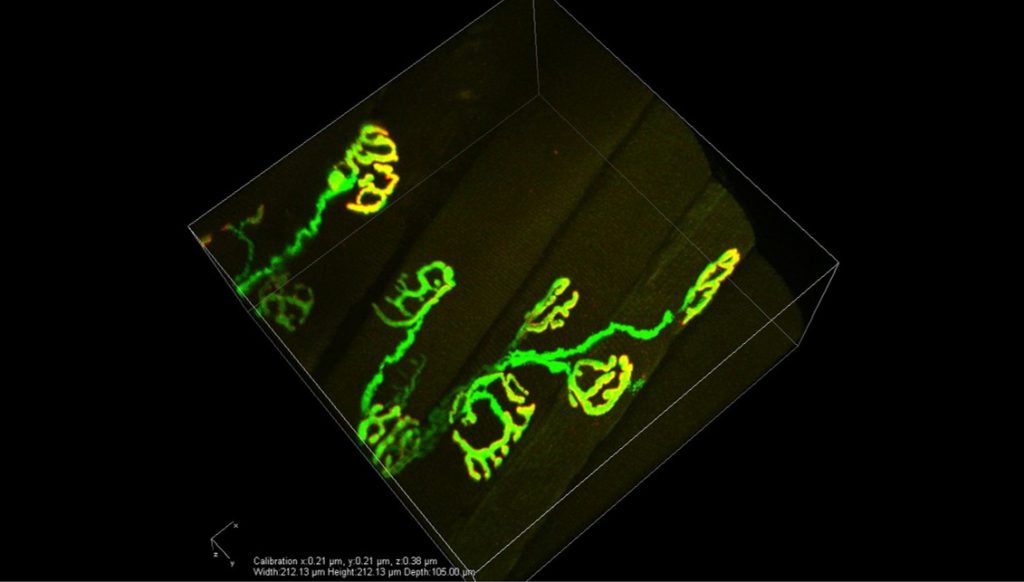The University of Liverpool’s Skeletal Muscle Research Group has received more than £2m worth of funding to examine the causes and prevention of skeletal muscle mass loss and function as we age.
The collaborative group, which is made up of researchers from the University’s Institute of Ageing and Chronic Disease (IACD) collaborating with colleagues from the universities of Oklahoma and Michigan, obtained five years of funding, worth in excess of £1.5m, from the United States National Institutes of Health (USNIH) to undertake fundamental studies of how age-related changes in motor nerves drive loss of muscle mass and function in older people.
Previous studies from this group has shifted the focus of international research in this area into understanding the role that degenerative changes in the arrangement or distribution of nerves (innervation) play in the age-related changes in muscle.
State-of-the-art expertise
This new work develops this research and brings together state-of-the-art expertise in imaging of neuromuscular structures and proteins in Liverpool with world class facilities for generation of novel experimental models at Oklahoma and precise monitoring of muscle function at a cellular level at Michigan.
The University of Liverpool group have also recently received £650K worth of funding from the Medical Research Council together with colleagues at Liverpool John Moores University for complementary studies aimed at understanding the molecular mechanisms of how muscle responds to exercise and how this is modified by ageing.
This work also relies heavily on the outstanding expertise in the large scale study of proteins (proteomics) available here and will examine the possibility that adaptations to exercise occur through novel processes called “redox relays” by which muscle cells transmit signals through serial oxidation/reduction reactions.
Greater understanding
Professor Anne McArdle, said: “The work that we have been doing over 10 years in collaboration with Michigan and Oklahoma has succeeded in changing the emphasis of international research in this area towards understanding more about how motor nerves regulate age-related degeneration of skeletal muscle.
“This has been a highly productive programme of studies which has relied on each partner bringing complementary state-of-the-art techniques to the problem. It is fantastic that we are able to continue to do this work and to utilise some of the key outstanding facilities, such as proteomics, provided by the University of Liverpool”.
For more information about the work of the Institute of Ageing and Chronic Disease please visit https://www.liverpool.ac.uk/ageing-and-chronic-disease/
